What Is Native Advertising?
Native advertising (also known as sponsored content or spon con) involves creating digital ads that are indistinguishable from other types of organic content.
In the example below, we see a native ad on display in a Reddit forum (r/movies.) The ad’s design makes it appear like any other post in the forum, but it’s marked “Promoted” so readers know it’s an ad:
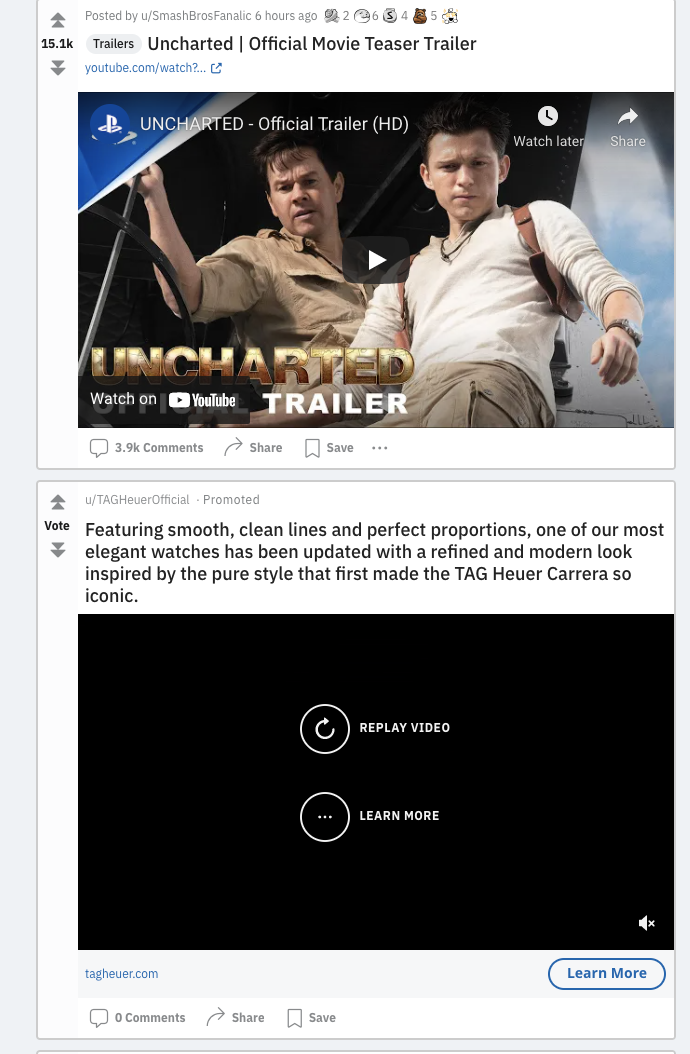
On Instagram, brands commonly work with influencers for their native advertising campaigns. For example, Volvo's native advertising campaign results in two different native ad formats (feed and story):

Promoted search results and sponsored social media posts are two popular examples of native ads. Both formats provide the same kind of value to users as their organic counterparts.
How Do Native Ads Work?
Native ads work like any other digital ad, with options to target specific demographics.
However, placing a native ad depends on the customer’s experience and behavior. Advertising platforms use algorithms to determine when an ad should be shown to a customer, so your native ads appear to them at the right time in the buyer’s journey.
These days, most businesses maintain an online presence of some kind — whether it’s a simple Facebook page or a fully functioning ecommerce site. Native advertising can help them generate brand awareness, drive traffic to their sites, and (eventually) increase sales.
Native Ads vs. Display Ads
Native ads are commonly misinterpreted as another type of advertising known as display advertising. Although both can be used in a digital marketing strategy, there are significant differences between the two.
Display Ads
Display ads are the traditional type of digital ads. They appear on websites and social media networks. The most common types of display ads are banner ads and sidebar ads.

Unlike native ads, display ads are meant to be overt. Companies use display ads to grab readers’ attention and encourage them to click through to their websites. They’ll also use formatting, color, and interactivity to make their display ads stand out.
It’s common to use native ads to drive brand awareness or attract leads. However, you can design display ads for every part of the buyer’s journey.
Benefits of Native Advertising
Many of us probably still remember the gaudy, flashing Internet ads from the early 2000s, complete with a flashing “Buy Now!” button. These days, digital marketing focuses more on influencing consumers subtly, according to Google.
Consumers treat ads differently now: we're more aware of what an ad looks like, and we’ll try to avoid sites with excessive pop-ups and ads. Native ads are designed to be less intrusive and more personal. Shoppers may not even notice they’re interacting with a native ad.
Other benefits include:
- Higher Click-through Rate: Unlike display ads, native ads commonlty appear in the same feed as organic content. They can earn a much higher CTR than a standard banner ad
- More Reach: Native ads’ can automatically adapt to the device they appear on (desktop, tablet, and mobile), so they can effectively reach more users.
- Less Maintenance: Once your native campaign is up and you’ve specified your target audience, it’s up to the advertiser platform to deliver results. Many companies enjoy working with native ads because they can drive more traffic and earn more views with less work.
- More User-Friendly: Native ads are much less aggressive in their approach and appearance to customers. Customers aren’t forced to view an ad that may have nothing to do with their specific requirements or shopping behavior.
Common Pitfalls of Native Advertising
However, the more subtle nature of native ads can also have its disadvantages, including:
- More Time Consuming to Create: Native ads can live on most platforms and appear on most devices, so you might need more time to create an ad that can be impactful on each one. If you’re new to creating native ads (and even if you arent), it takes time to find the right ad creative and audience targeting combination.
- Customer Tracking and Behavior: Native ads target people based on their internet behavior and history — though this data is usually anonymous to marketers. Internet users are becoming more and more aware of the ways their data is stored and used online. Some might find native ads useful; others might consider them a nuisance.
Tools for Native Advertising Campaigns
Once you create your native advertising campaign in Google, it’s important to track its performance and make updates as necessary. While Google Ads offers its own tracking and reporting tools, it can’t track every metric relevant to the success of your campaign.
You can work with third-party tools to better understand the impact of your native ads in real-time.
For example, the Media Monitoring tool by Prowly tracks when and how customers mention your brand(s) or product(s) online.
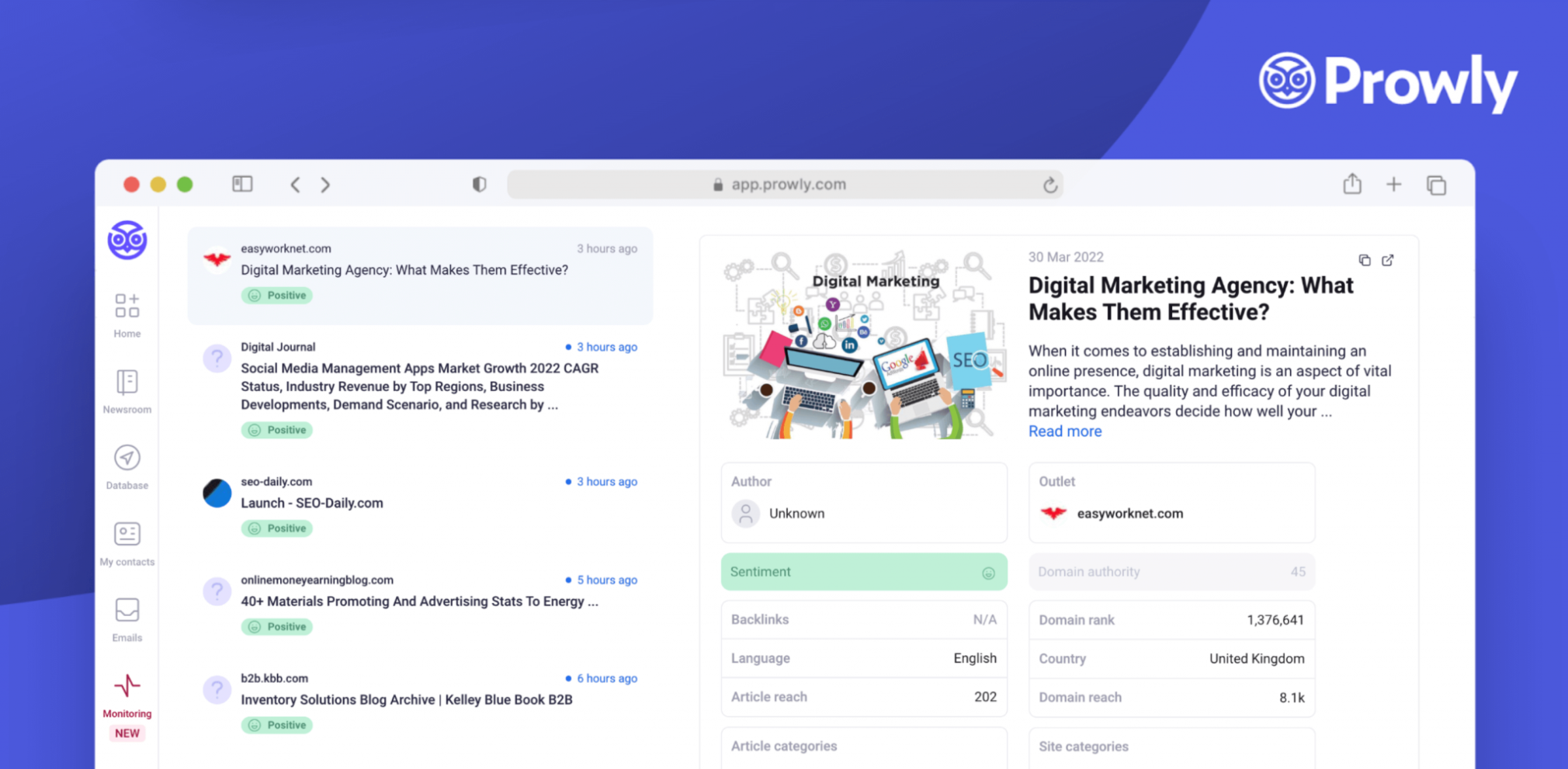
Businesses often use native advertising campaigns to generate leads or brand awareness, so monitoring brand mentions is another way to track the success of your ads. Your brand’s sentiment and estimated reach can tell you how customers feel about your brand.
Reviewing these metrics before creating your ads can help you determine your campaign goals. A brand awareness campaign, for example, will likely look much different than a campaign to change the brand sentiment.
You can also use the Advertising Research tool to scope out competitors’ SERP ads and learn more about their advertising strategy. Most advertising tools aren’t able to track native advertising campaigns, but their SERP ads should be able to tell you more about the keywords they target or the products they highlight in their ads.
Use your competitors’ strategies for inspiration or benchmarking when building out your own native advertising campaigns. Are there any comparable products or services you can highlight in your native advertising campaign?
To get started with the Advertising Research tool, enter your competitor’s domain and your target country into the tool:
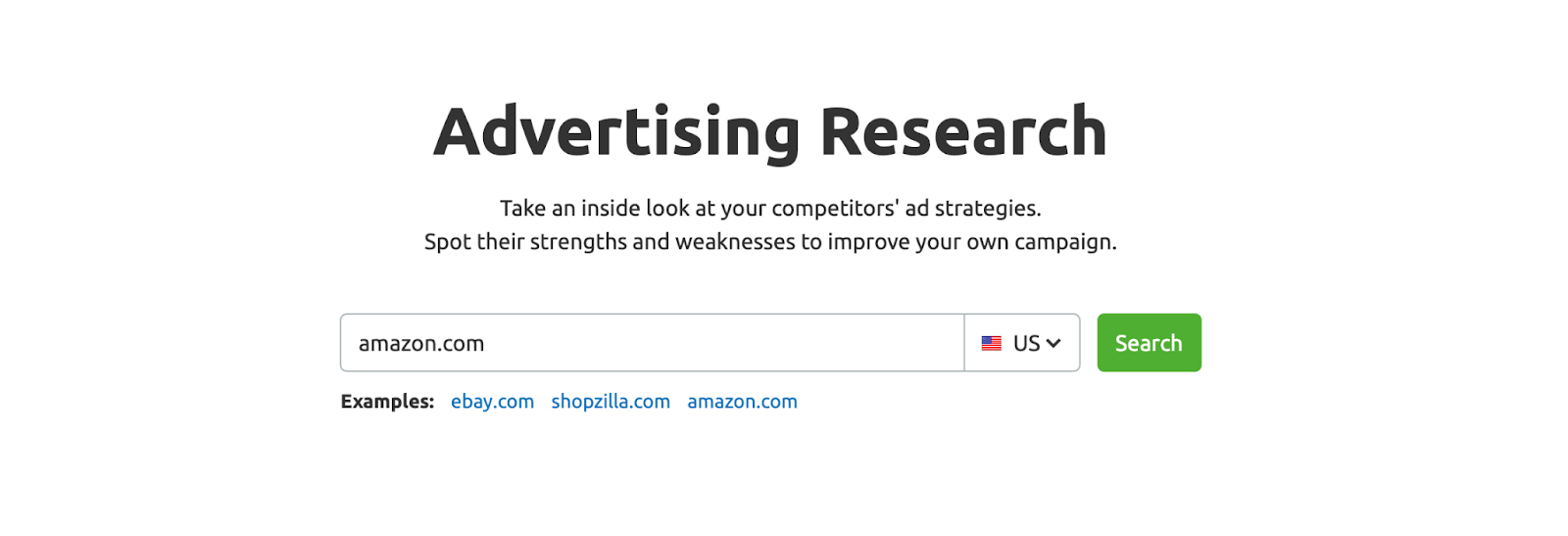
The tool returns an easy-to-follow report on the domain’s SERP ads, including their estimated traffic and search positions:
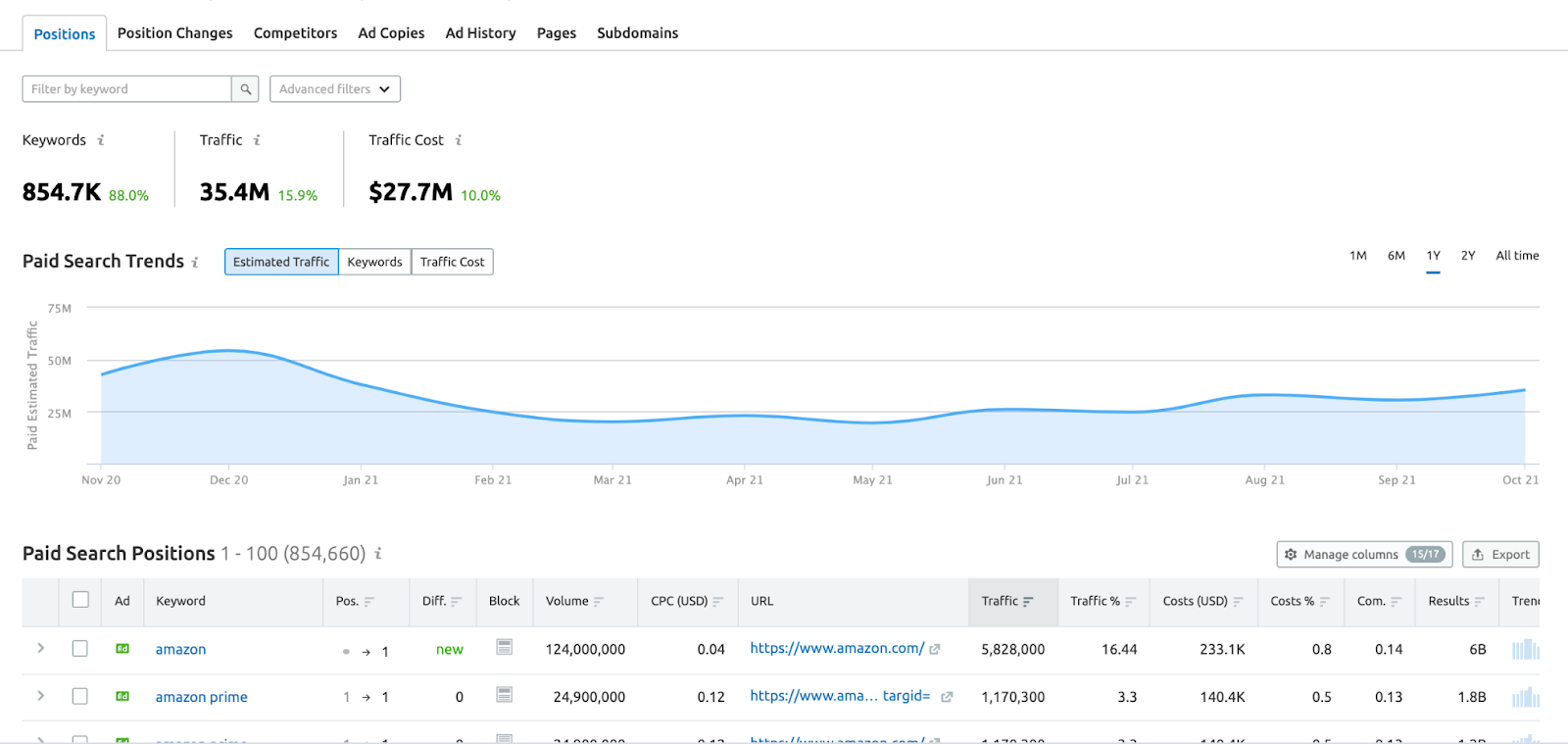
Toggle the Ad Copy tab to see current copies of their SERP ads. Try to note any trends or language in the copy that you can use for your native ad:
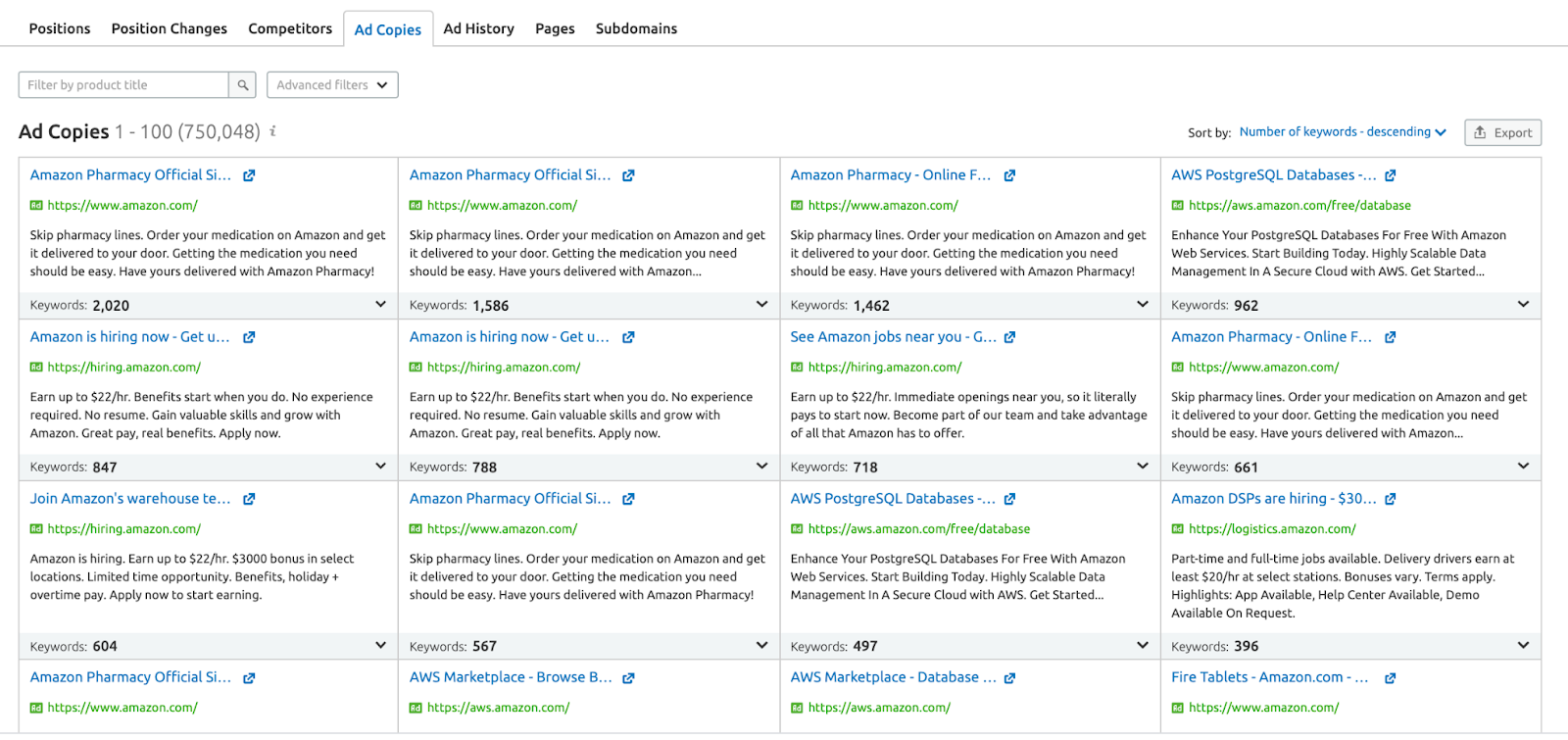
Conclusion
Native advertising is a useful type of ad to use as part of your marketing strategy. They can help to drive results by appearing more organically on websites and social media platforms. However, they still require time and planning when it comes to choosing the right creative for your target audience.
